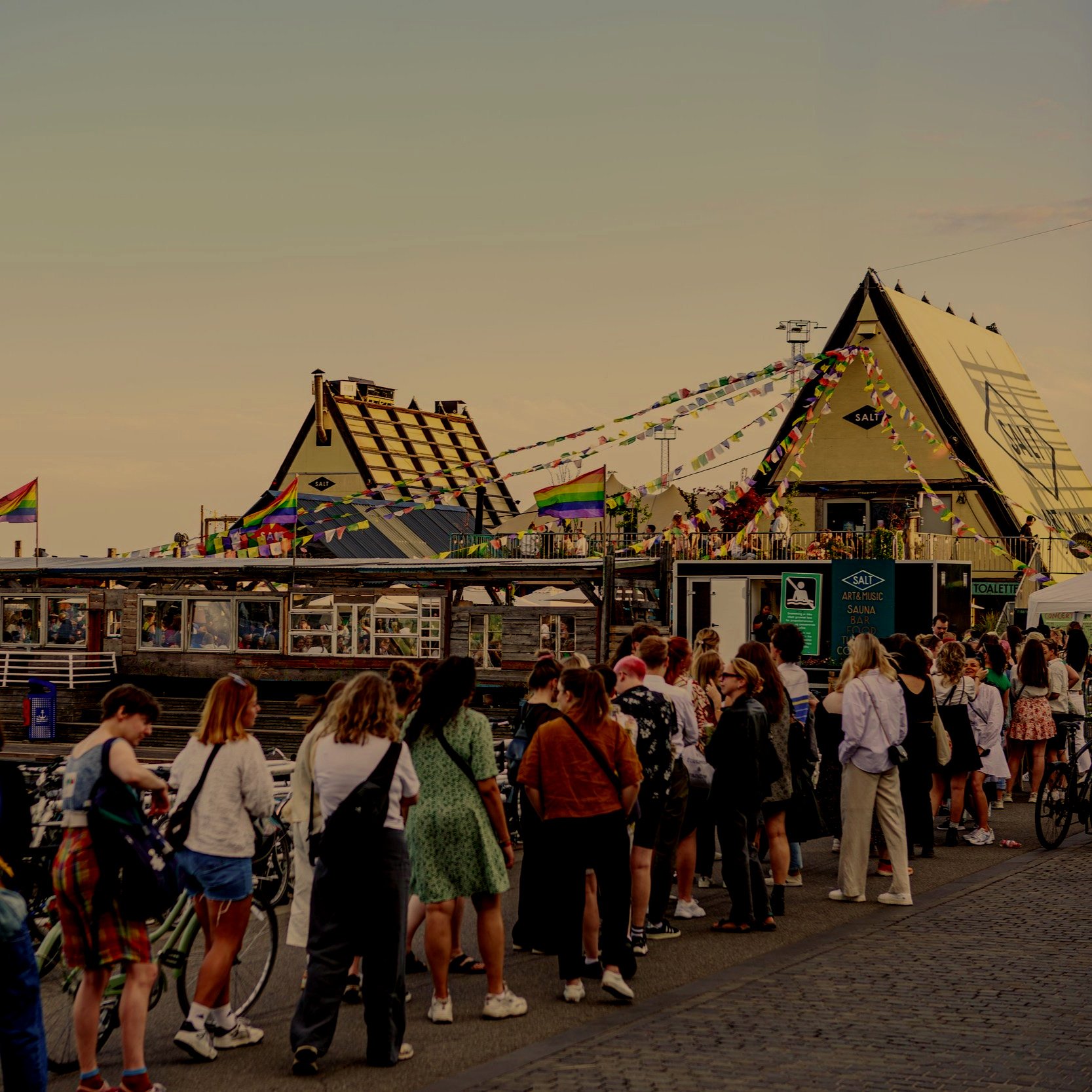
ABOUT SALT
SALT was established as an art project in 2014 (Sandhornøy, Northern Norway) with the fish rack as its focal point. The fish rack is a triangular-shaped frame and supporting structure for drying fish.
The fish rack has been placed on weather-exposed headlands and islets for thousands of years and is one of the few monumental and tall structures that can be seen along the northern coast.
It is a simple, strong and practical construction that is easy to set up and take down, it is intended to withstand harsh winter storms and to bear the weight of several tens of tons of pollock, cod, tusk, haddock that are hung in the fish rack for drying and preservation.
SALT is inspired by the philosophy and knowledge that the traditional fish rack carries. People in northern countries - and ocean areas - have been dependent on drying fish and meat for winter storage of food. The fish trap had the flexibility needed to preserve food in places where resources were available. Where they were set up were places with local fishing resources or where the cod came in from the Arctic Ocean to spawn.
This technology was essential for the survival of the local population in the dark cold winter months and it was flexible enough to be moved with the changes in nature and in the access to resources for the population along the coast. The fish trap has been used for thousands of years and is still used today. In Norway, the fish rack became the basis for the first major export industry. Dried fish was sought after in Europe and formed the basis for trade and value creation that built society and the nation.
It is no exaggeration to say that Bergen is built on the control and distribution of this resource. According to Bishop Tor Singsaas, Nidaros Cathedral in Trondheim was largely built with stockfish money.
SALT, both as an idea and as a physical manifestation, continues the practical and philosophical approach of coastal culture. A philosophy where practical thinking and flexibility are the fundamental value, and necessary for survival. SALT makes it visible that flexible temporary structures are still of great value. Not least as visions for designing more sustainable futures.
The fish rack is not a fixed building mass – but in motion and willing to absorb changes, new visions and practical solutions to ongoing needs and challenges. SALT is in an ongoing dynamic movement – where not only the concept, but the constructions are in continuous change, both in relation to the ongoing urban development in Oslo and the energy in the art and cultural field.
Through philosophy in the face of coastal culture, the use and exploration of the fish rack as a pivot point, SALT has developed into an interdisciplinary arena, a physical and conceptual framework for art, culture and debate and has given Oslo the most climate-neutral cultural arena in Norway.
Oslo Municipality awarded SALT the Oslo City Artist Award in 2021 on the grounds that "SALT has added a new dimension and a unique setting for cultural experiences to the port city of Oslo".
Welcome to Langkaia!
“When night falls, the festival takes on an even more Norwegian earthiness. There's a bonfire, but i head to the "amphisauna” to warm up properly. I sip a beer in the prism-like oven, which can fit up to 120 people and has a huge window at the front so you can look out over the beach. With a bar at the back and deep house music pumping, it feels more like a club than a sauna”
– The Guardian, SALT Sandhornøy 2014

